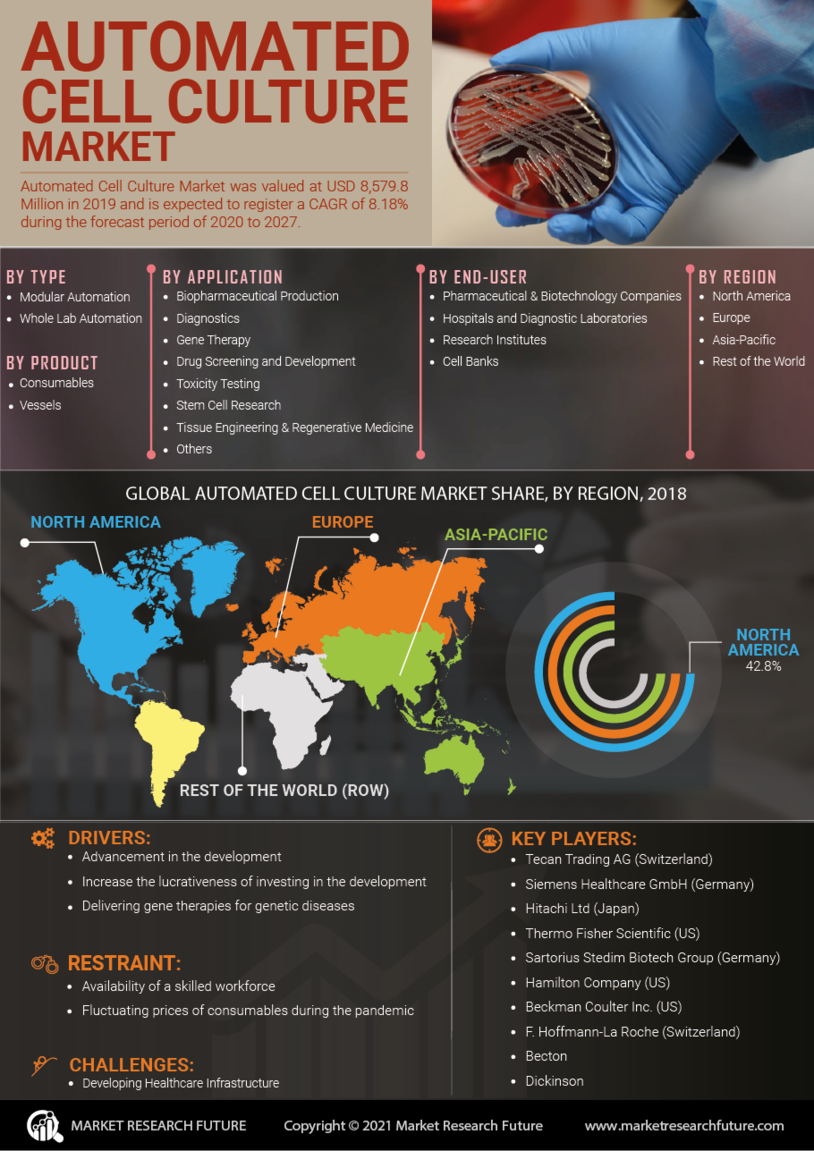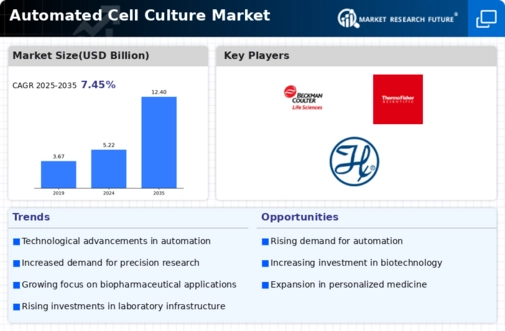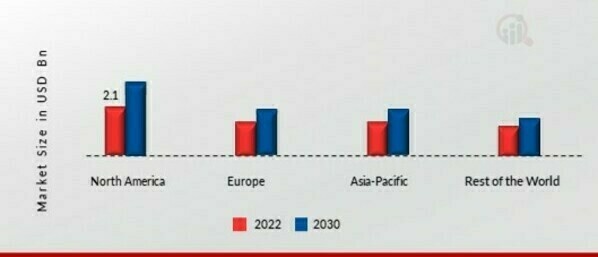Market Growth Projections
The Global Automated Cell Culture Market Industry is projected to experience substantial growth, with estimates indicating a market value of 5.22 USD Billion in 2024 and a potential increase to 12.4 USD Billion by 2035. This growth trajectory suggests a compound annual growth rate (CAGR) of 8.15% from 2025 to 2035. Such projections reflect the increasing adoption of automated systems across various sectors, including pharmaceuticals and biotechnology. The anticipated growth underscores the importance of automated cell culture technologies in meeting the evolving demands of the global healthcare landscape.
Rising Demand for Biopharmaceuticals
The Global Automated Cell Culture Market Industry is experiencing a surge in demand driven by the increasing need for biopharmaceuticals. As the biopharmaceutical sector expands, the requirement for efficient and scalable cell culture processes becomes paramount. Automated systems facilitate high-throughput screening and production, which are essential for developing therapies. In 2024, the market is projected to reach 5.22 USD Billion, reflecting the industry's growth. This trend is likely to continue as biopharmaceuticals account for a significant portion of the global healthcare market, indicating a robust future for automated cell culture technologies.
Increased Focus on Personalized Medicine
The Global Automated Cell Culture Market Industry is being influenced by the growing emphasis on personalized medicine. As healthcare shifts towards tailored therapies, the need for precise cell culture techniques becomes critical. Automated systems allow for the cultivation of patient-specific cells, enabling researchers to develop customized treatment plans. This trend is likely to enhance the market's value, projected to reach 12.4 USD Billion by 2035. The integration of automated cell culture in personalized medicine signifies a transformative approach to healthcare, aligning with global trends towards individualized patient care.
Technological Advancements in Automation
Technological innovations are propelling the Global Automated Cell Culture Market Industry forward. Advancements in robotics, artificial intelligence, and machine learning are enhancing the efficiency and precision of cell culture processes. These technologies enable researchers to automate repetitive tasks, reduce human error, and improve reproducibility. As automation becomes more sophisticated, it is expected to attract investments and drive market growth. The anticipated compound annual growth rate (CAGR) of 8.15% from 2025 to 2035 underscores the potential of these advancements to reshape the landscape of cell culture practices globally.
Regulatory Support and Funding Initiatives
Regulatory bodies and government agencies are increasingly supporting the Global Automated Cell Culture Market Industry through funding initiatives and favorable policies. This support is crucial for fostering innovation and ensuring compliance with safety standards. Governments are investing in research and development to enhance biomanufacturing capabilities, which directly benefits automated cell culture technologies. Such initiatives are likely to stimulate market growth, as they provide the necessary resources for companies to develop and implement advanced automated systems. This collaborative environment is expected to drive the market forward in the coming years.
Growing Applications in Research and Development
The Global Automated Cell Culture Market Industry is witnessing a rise in applications across various research and development sectors. From drug discovery to toxicology testing, automated cell culture systems are becoming integral to scientific research. These systems streamline workflows, enhance data accuracy, and enable high-throughput analysis, which are essential for modern research demands. As the need for rapid and reliable results increases, the adoption of automated technologies is likely to grow. This trend not only supports the market's expansion but also aligns with the global push for innovation in scientific research.





